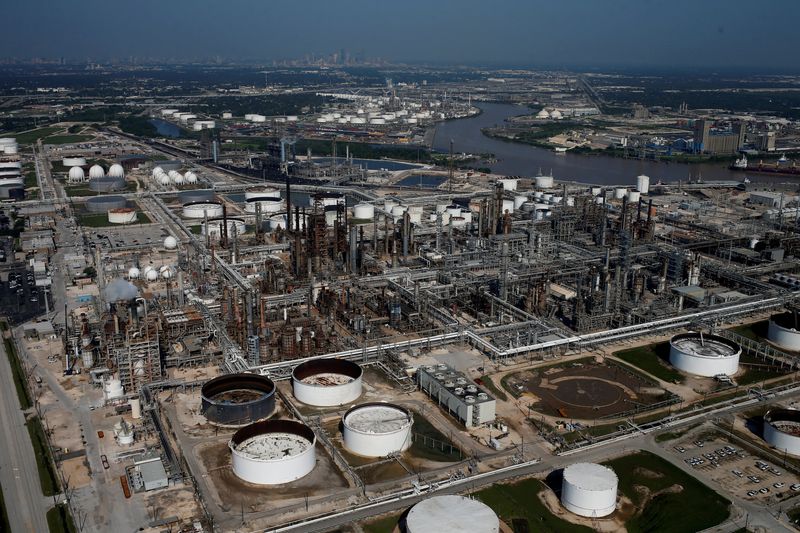By Erwin Seba
HOUSTON (Reuters) - U.S. oil refinery utilization rates, a measure of how operators view future fuel demand, could top 90% next quarter for the third consecutive period, industry analysts projected, reflecting scant stocks and strong demand for diesel.
Historically, utilization rates fall in the fourth quarter as refiners begin winter maintenance and motor fuel consumption slips after U.S. summer driving season ends. This year's final quarter, however, could see operators hold production rates high to grab strong diesel margins, they said.
The forecast excludes the potential impact of a major hurricane striking the U.S. Gulf Coast, home of nearly half the nation's oil refining. It also excludes unplanned refinery outages or a possible deep economic recession that cuts demand, analysts said.
Refiners will avoid a direct hit by Hurricane Ian, which is taking aim at Florida.
“Lower gasoline cracks have pulled refining margins down in recent weeks, but overall margins are still quite attractive," said Matthew Blair, head of refining research at energy specialist Tudor Pickering Holt & Co. “We would expect 90% or higher barring a major hurricane,” he added.
Overall U.S. utilization - the amount of oil processed compared to a plant's rated capacity - was above 92% and 93%, respectively, in the second and third quarters this year, he said. The first quarter averaged 89.5%.
Profit margins this year have been very strong, but have cooled with declines in gasoline consumption. The margin from selling diesel from a barrel of oil and replacing that barrel, called the diesel crack spread, this week was about $54 per barrel on the Gulf Coast, compared to about $12 a year ago, according to Refinitiv.
Refinery operators have run at high levels this year in part due to capacity losses from plant closures during the Coronavirus pandemic. U.S. crude oil capacity is down nearly 1 million barrels per day since early 2020, to 17.9 million barrels per day (bpd).
DIESEL DEMAND
Demand in Europe has made diesel supplies tighter globally, said John Auers, managing director of Refined Fuels Analytics, part of consultancy RBN Energy.
“Diesel margins will be higher, Auers said. “I think that will be pushing refining margins.”
U.S. Energy Secretary Jennifer Granholm in August wrote to refiners Valero Energy (NYSE:VLO), Chevron (NYSE:CVX) and Exxon Mobil (NYSE:XOM) asking they reduce product exports and build U.S. fuel supplies, citing "historically low levels of gasoline and diesel in parts of the country."
However, exports of distillate, primarily diesel, soared to 1.76 million bpd in the week ended Sept. 16, from 579,000 bpd a year earlier. At the same time, inventories fell to 117.3 million barrels, down 12 million barrels from the same week a year ago.
Worries over tighter diesel supply are boosting refinery runs, said Robert Yawger, director of energy futures at Mizuho.
"Refiners are worried about the distillate situation being at multi-year lows,” Yawger said. “They’re trying to make more distillate.”
Holding runs above 90% runs the risk of further eroding gasoline margins. About 46% of a barrel of oil is processed into gasoline and only 27% to diesel.

U.S. gasoline stocks rose by 1.6 million barrels in the week ended Sept. 16 to 214.6 million barrels, the EIA said.
Diesel output could jump next year as Exxon completes a 250,000 bpd oil-processing expansion to its Beaumont, Texas, refinery. Offsetting that, LyondellBasell Industries’s plans to permanently close its 263,776 bpd Houston refinery by the end of 2023.